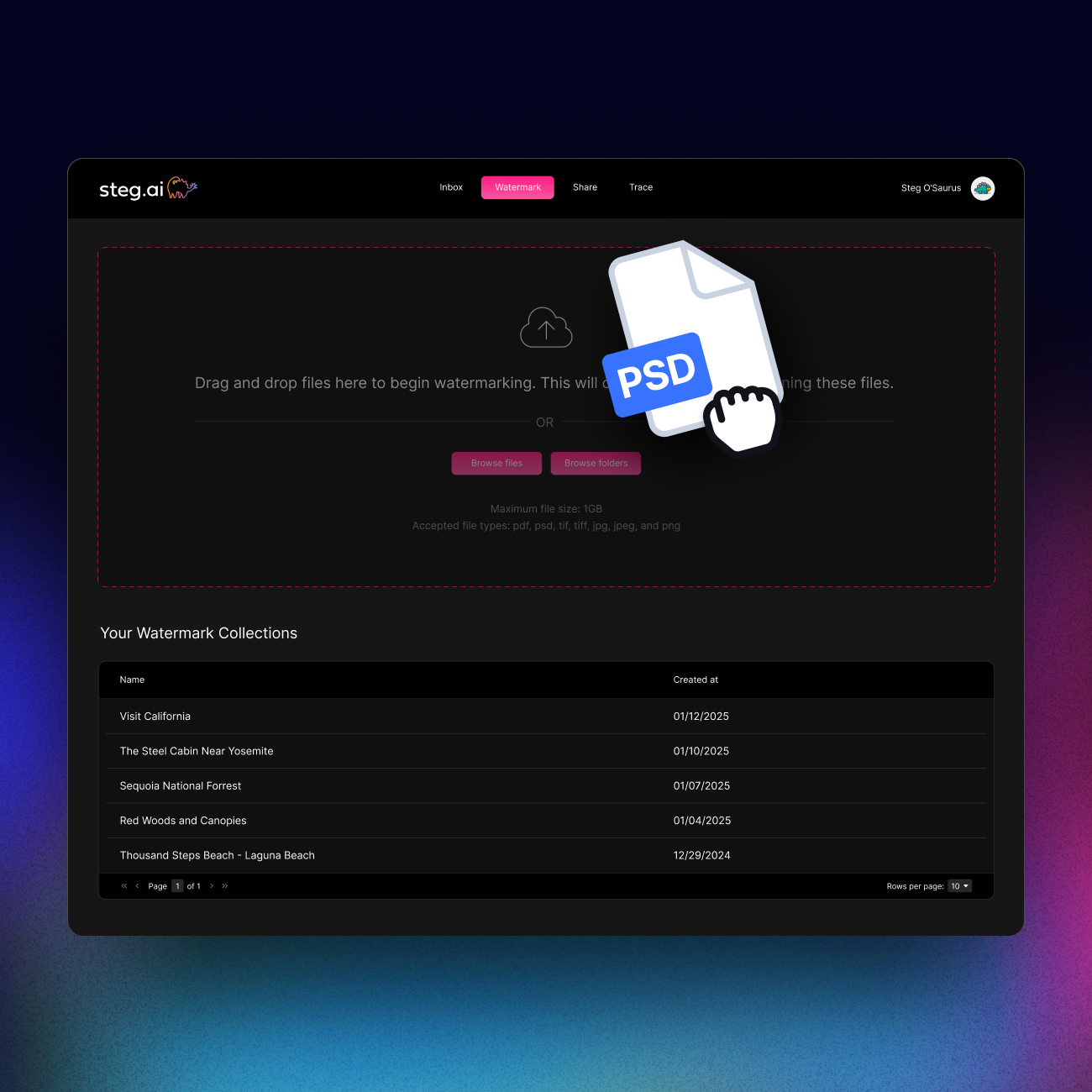IRVINE, CA – March 25, 2025 – Steg.AI, a leader in content security, has expanded its forensic watermarking capabilities to support Adobe Photoshop (.PSD) and Large Document Format (.PSB) files. This addition further solidifies Steg.AI as the most comprehensive content protection software for brands at risk of leaks. Organizations can now protect their content from misuse and leaks while it is being worked on, rather than just final drafts.
Steg.AI’s Photoshop file watermarking has two modes. The first one is to flatten the layers of the Photoshop file and then embed the robust forensic watermarking. The second mode is to watermark each layer independently, which means that layers can be deleted but the watermark will still persist on the file. These two approaches ensure the integrity of layered image files while maintaining their security and traceability. Steg.AI’s forensic watermarks are tamper-resistant and survive manipulations like cropping, compression, and metadata stripping.
“We’ve evolved our software to a point where we can support most visual formats, especially the common ones. Generally, any visual media formats a client needs, we can accommodate with our algorithm,” says Dr. Joe DeGol, CTO of Steg.AI.
Steg.AI already offers the most expansive file support for watermarking, including images, videos, and documents (list of supported formats below). With the addition of .PSD and .PSB, the company continues to lead the industry in comprehensive content protection solutions.
| Supported Image Formats | jpeg, png, psd, psb, tiff, gif, bmp, ppm, webp |
| Supported Document Formats | pdf, docx, pptx |
| Supported Video Containers | mov, mp4, avi |
| Supported Video Compression Formats | mpeg, avi, vp9, h264, h265, ProRes |
Steg.AI’s forensic watermarks protect digital media from unauthorized use and leaks. By leveraging cutting-edge, deep learning techniques, Steg.AI ensures that watermarks are imperceptible to the human eye while remaining resilient to manipulations. The forensic watermarking software can be accessed via API or a Web Application, offering flexibility in deployment.
